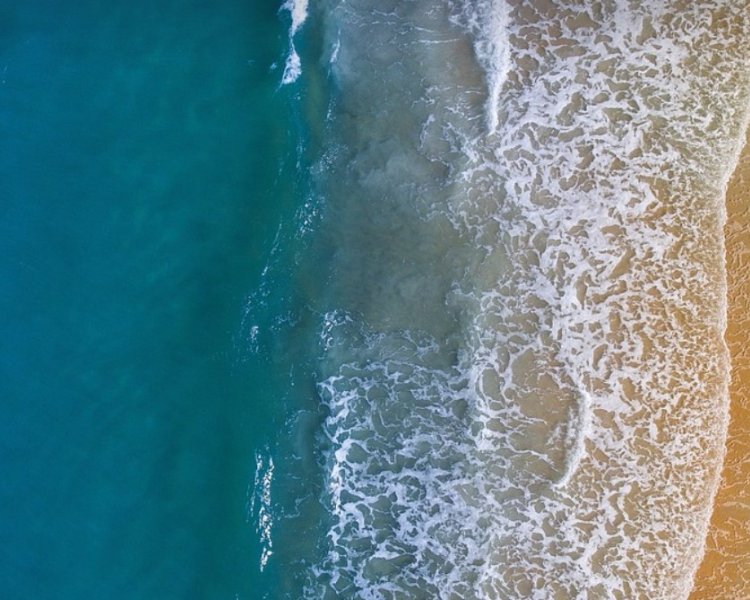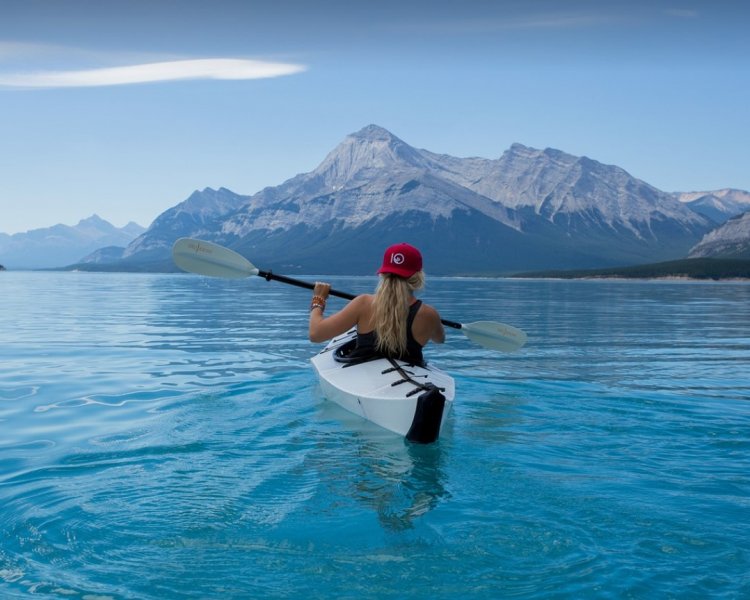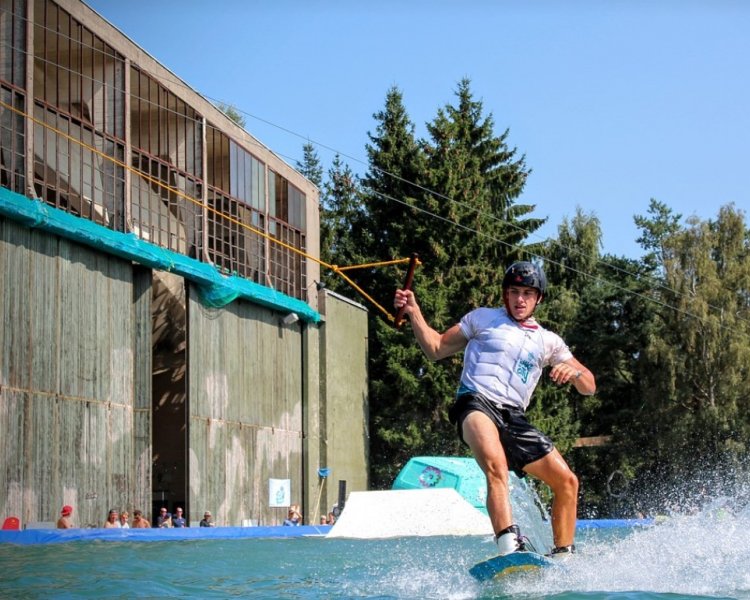Surfboards As Paddle Boards? « (Get My Guide)

Stand up Paddle boarding (SUP) is one of the fast growing sports. SUP is often easier to learn than surfing. However the boards can very expensive running from $500 up to $3,000. At those prices it would be tempting to use an old surfboard, especially before deciding to purchase a SUP board.
Can surfboards be used as paddle boards? It’s not ideal to use a surfboard as a paddle board. Paddle boards and surfboards are built with different dimensions, and a surfboard has less flotation and stability. This can result in the board being more likely to tip while paddle boarding.
Surfboards are designed to be flotation devices that people spend much of their time sitting or lying on waiting to catch the next wave. The time spent standing is minimal and often involves moving with the board and the waves to maintain balance.
Paddle boards are designed to float with people standing on them (or kneeling) for long periods of time, creating a different set of balance and flotation needs.
Get all the details about the differences between paddleboards and surfboards by clicking here.
Reasons Surfboards Don’t Make Great Paddle Boards
Flotation
Both surfboards and paddleboards use foam volume to keep the rider afloat. Both boards have different goals in mind in their relationship to float.
- Surfboards don’t have a stable float when a rider is standing. typically they are smaller and lighter. The only have 24-32 liters of foam. This is enough flotation when the rider’s weight is dispersed but is not enough volume to keep the rider afloat when the weight is concentrated by the act of standing. The surfer is kept afloat when standing by the speed and momentum of riding a wave.
- A rider is standing or kneeling the entire time they are riding a paddleboard. So, it must have increased flotation to bear this concentrated weight and keep the board above the water. A typical paddleboard has over 100 liters of foam volume. This provides enough flotation to keep the board above water. Without this flotation, the board would be prone to tipping and would be difficult to turn as it starts to sink.
- Surfing longboards may be able to work for paddleboarding. Some 9-10 foot surfing longboards do have a higher foam volume. They will often have a foam volume of about 85 liters, making them closer to a paddleboard. However, even a longboard may not have the flotation needed.
- The bottom line: When using a surfboard, especially a shortboard, for paddleboarding, the person trying to stand and the paddle is likely to find their board sinking under their weight.
Stability
Surfboards are built smaller to be maneuverable, while paddle boards need to be more stable to allow for the increased difficulty of standing, balancing, and paddling at the same time.
To get this increased stability, paddleboards are typically wider and thicker compared to a surfboard of the same length. The larger surface area increases stability and balance, making a paddleboard less likely to tip.
The increased stability of a paddleboard allows riders to do more than just paddle. Paddleboards can be used for fishing, riding the waves, and even yoga. Paddleboards are built with slightly different shapes and decking to accommodate these activities, making them more multipurpose than a surfboard.
Construction
Surfboards and paddleboards definitely share some similarities in construction. But it’s the differences in how surfboards and paddleboards are made that make each one better suited for different purposes and uses.
- A paddleboard typically has a deck that is reinforced to help hold all the rider’s weight in one area. Even with this reinforcement, the deck will sometimes sag before stabilizing with lightweight paddleboards. Because a surfboard does not have this reinforcement, it would collapse under the rider’s feet due to the concentration of their weight with continued use.
- Both surfboards and paddleboards are constructed with rocker. Rocker is the curve in the board from the nose to tail that gives it a faint banana shape. The rocker allows the board to fit the curve of the wave.
- Surfboards have more rocker, which allows them to drive into the wave. This makes using them like a paddleboard more challenging. They are less likely to track straight on flat water and need more skill.
- Paddleboards have a long flat rocker that is better for gliding and tracking. This can increase the efficiency of the glide so that less effort is needed for paddling. Paddleboards are going to require less skill and energy to keep them going straight.
Using a Long Board as a Paddle Board
Most of the reasons given why a surfboard is not recommended for paddle boarding have been based on a shortboard. Due to its longer length and higher foam volume, some people may be tempted to try to use a longboard. Longboards are the closest to a SUP board. However, their maximum width is still usually only 23.5 inches wide compared to the smallest SUP which is 24 inches.
A longboard will also not be as thick as a small wave paddle board. These boards can be up to 4 inches thick compared to a regular longboard, giving them more flotation needed to stand.
This small width and lower flotation will usually require a pro rider or a very small rider even with a longboard. Most experienced riders will still prefer a smaller SUP rather than a surfboard.
So if someone that has the skills and is lightweight could probably use a 9-10 inch longboard for a paddle board, the warning is that it will not be as comfortable, stable, or as efficient as using a paddle board.
In fact, the longer width may even make it harder to perform fast turns in the waves compared to a short, but wider and thicker paddle board.
The Size and Skill of the Rider Matters
Smaller riders, such as children, weigh less and therefore need less foam volume to keep them afloat. They may be able to use a surfboard as a paddle board, especially if they have some experience paddling. However, even younger riders can benefit from the stability of using a paddle board when first learning to paddle.
One key to buoyancy is speed. The faster a board goes the more buoyancy it has. Highly skilled riders are often able to maintain enough speed to keep a smaller board afloat.
They also often have the skills to allow their board to partially sink waiting for the next wave and still maintain balance. But, even advanced riders usually prefer small and maneuverable paddle boards to a surfboard of the same size
Final Thoughts
Using a surfboard for a paddle board is not a good option. Neither the shortboard nor the longboard is going to have the flotation and stability that a true paddle board is going to have.
Even a small paddle board is going to have more stability and stronger decking to hold the weight of the rider than a longboard. The result is that the surfboard is likely to sink into the water and tip the rider off.
But, if someone does not want to purchase a board, what are other options. For someone that has never surfed or paddle boarded, renting one for a few hours or the day could be a money-saving way to try out the correct board for the correct sport.
This is likely to give a clearer picture of what paddle boarding is rather than attempting to use a surfboard that is not suited to paddle boarding.
...



